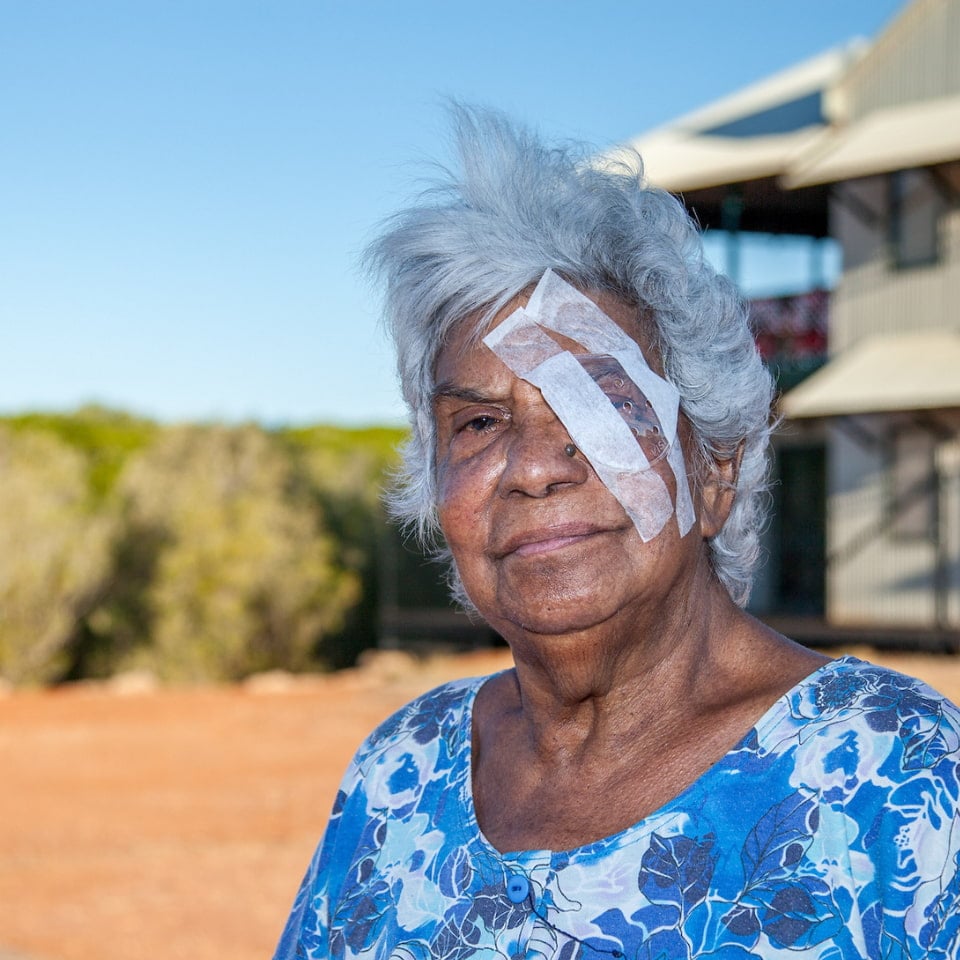Here's what we'll cover...
Click on the link to jump to sections that you're most interested in
What is cataract?
Cataract is the leading cause of blindness worldwide.
When someone suffers from cataract, it means they have a clouding in the lens of the eye, which should be clear. The normally clear (black) pupillary area becomes grey, as a milky cloudiness of the lens progresses until the cataract is mature.
Once a cataract is mature, an individual will only be able to distinguish between light and dark, which causes vision loss. Other symptoms can include glare hypersensitivity, blurry vision, faded colours and reading difficulties.
Cataract can affect one or both eyes (bilateral cataract) and can lead to blindness.
To an untrained person, the eye can look normal during the early stages of cataract, and the clouded lens may cause no decrease in the acuity of vision. Often, the patient can be unaware that they even have cataract!

Reggie Uluru, 72, a traditional owner of the Uluru area post cataract surgery on his right eye (2010) | Photographer: Barry Skipsey
Cataract in Aboriginal and Torres Strait Islander people
Cataract is the leading cause of blindness for Aboriginal and Torres Strait Islander Australians. It’s also the second most common cause of vision impairment for Aboriginal and Torres Strait Islander people, after uncorrected refractive error.
Fortunately, blindness from cataract is very rare these days. A highly effective surgical procedure is used to remove the cloudy lens and replace it with an intraocular lens (IOL) – a manufactured lens.
When Fred was alive, IOLs were expensive – which meant that low-cost cataract surgery was considered an impossibility. However, Fred put the pieces in place to create state-of-the-art intraocular lens factories in Nepal and Eritrea.
Read more about Fred's IOL work.

Want to know what someone with cataract sees?
View our sight simulatorAboriginal and Torres Strait Islander people are less likely to receive treatment for cataract - why?
Aboriginal and Torres Strait Islander Australians are much less likely to have the specialised medical procedure to remove cataract than non-Indigenous people (61% Indigenous compared with 88% non-Indigenous) (National Eye Health Survey Report, 2017).
They also experience longer waiting times for surgery; 140 days on average, compared with 92 days for non-Indigenous patients (PM&C report, 2017).
Experts partly blame the lack of access to services in remote areas for some of these statistics.
In outer regional areas, vision impairment rates are more than double those in regional areas. Health facilities in remote areas often have longer waiting times and limited surgical capacity. This can be due to a lack of equipment and personnel.
Other barriers for Aboriginal and Torres Strait Islander patients include the cost, as well as the potential complexities of navigating the healthcare system.
Disclaimer: The content on this page is not intended to be medical advice. For medical advice, please contact your local health professional. All statistics quoted use the most recent information available, to the best of our knowledge.
